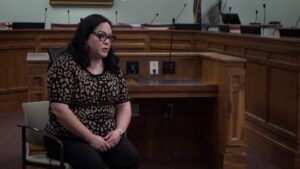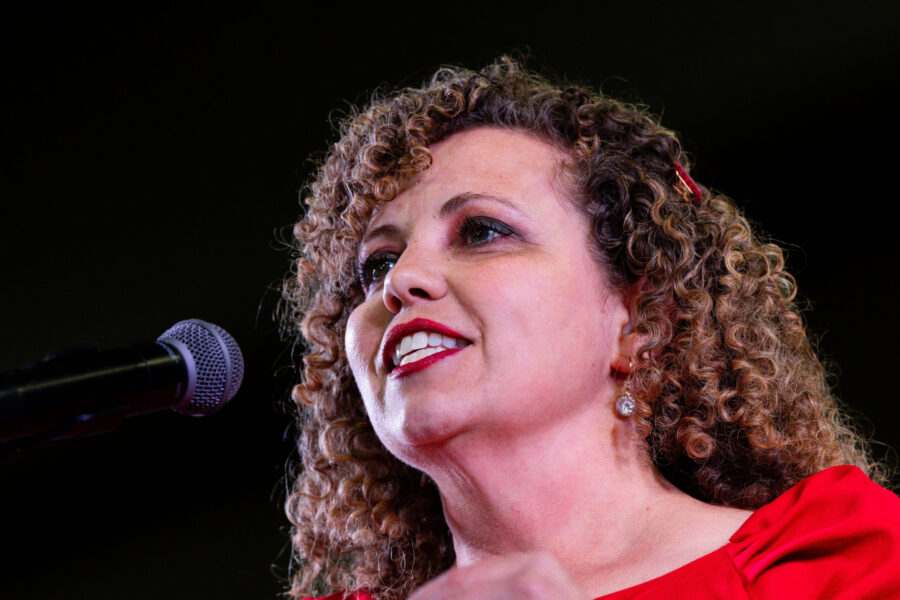‘This is not sustainable’: How the child care crisis impacts Utah
Feb 26, 2024, 10:00 PM | Updated: Feb 27, 2024, 5:45 am
SALT LAKE CITY — It’s a major concern for many Utah families – finding and paying for child care.
Advocates say the problem is poised to get worse as many day care facilities are losing federal funding they received during the COVID-19 pandemic.
But there are ways struggling families can get help.
Child care providers facing tough choices as pandemic relief funds phase out
‘Way too much money’
Rhiannon McDaniel is a mother of two. She and her husband live in Holladay.
They both work, and therefore, they need child care.
Late last year, after months on a waiting list, they finally found a day care. They sent their youngest child, while their oldest went to preschool, with a part-time nanny helping at home the rest of the day.
“After about two months,” said McDaniel, “we were just like, holy cow, we are spending way too much money on child care.”

Rhiannon McDaniel and her husband have two children. Both McDaniel and her husband work, so they have a need for day care. (KSL TV)
Just how much?
“In September and October, we spent $3,150 a month,” said McDaniel. “We were just like, this is not sustainable.”
It may be a more extreme example, but advocates say parents across Utah are facing a similar dilemma.
“People drop out because they just simply cannot afford it anymore,” said Anna Thomas, policy director at Voices for Utah Children.
Thomas is worried about child care in Utah, especially now that billions in pandemic-era federal funding for child care providers is all but dried up.
“We hear from providers that they’re not able to use all of the slots that they’re licensed for because they can’t offer competitive wages to keep staff,” said Thomas, “or they can’t afford to hire somebody so that they can take on additional kids.”
Tough choices
Aleatha Child runs an in-home day care in Brigham City. Child received “a couple thousand each month” in federal funding, and it made a difference.
But at the end of September, that federal funding ended, and Child’s allotment is basically gone. Even after modestly raising her prices, she has had to make some tough choices.
“I had to let go staff,” Child said.

Aleatha Child runs an in-home day care in Brigham City. A lack of funding has forced her to make some tough choices. (KSL TV)
That means she’s now the sole staffer at her day care – other than a parent volunteer – taking care of nine children.
“I don’t know what the future holds,” said Child. “but I am trying everything I can to keep my program afloat and going because I absolutely love the families, and I love the kids.”
Last fall, a study from the Century Foundation, a progressive think tank, estimated with the end of federal child care funding, hundreds of child care programs in Utah would close.
So far, that isn’t happening.
“We’re not seeing that kind of closures at this time,” said Heather Thomas, who directs Utah’s Office of Child Care in the Department of Workforce Services.
But advocates fear those closures are coming – after this school year ends.
Push for more funding
Despite multiple requests, the Utah Legislature is not stepping up to cover lost federal funding for child care.
During a recent press event with reporters, House Speaker Mike Schultz, R-Hooper, said funding “absolutely should” be part of the solution to the child care crisis.
But, Schultz said, creating more supply is the priority. He supports a Republican proposal to boost the number of kids allowed at unlicensed day care facilities from six to eight, although it’s strongly opposed by child advocates such as Voices for Utah Children.
“We have to focus on the supply,” Schultz said. “And then you can focus on the funding.”
Another proposal from Senate Minority Leader Luz Escamilla, D-Salt Lake City, would retrofit unused state buildings and build child care facilities in them, partnering with private businesses.

Another proposal from Sen. Luz Escamilla, D-Salt Lake City, would retrofit unused state buildings and build child care facilities in them, partnering with private businesses. (KSL TV)
“The cost of leasing a location and having a location is very expensive for child care,” said Escamilla. “That will significantly reduce the cost.”
There is one solution available right now for Utah families. The state of Utah offers assistance to pay for child care. And guess what? There’s still money available – with no waiting list.
“We have increased the income limits so more people can be eligible for that child care assistance,” said Thomas.
Path forward
As for McDaniel, her family has figured out a less expensive solution – for now. She and her husband shifted their work schedules to cover gaps in the day when their nanny isn’t there, eliminating the need for day care.
McDaniel is grateful they have that flexibility, and she feels for those who don’t because navigating the challenges of child care isn’t getting easier.

Rhiannon McDaniel is grateful they have that flexibility, and she feels for those who don’t because navigating the challenges of child care isn’t getting easier. (KSL TV)
“I think there’s a part of me that’s like, oh, it would be really cool to have more kids,” said McDaniel. “Then there’s another part of me that’s like, how? Like, how would we do that?”
You can find details on Utah’s child care assistance program here. There are also federal tax credits and care accounts that can help. More information is available here.
The state of Utah also has a website to help parents search for child care options. You can find that here.













